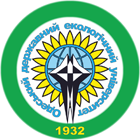Автори: О.Ю. Хецеліус
Рік: 2015
Випуск: 19
Сторінки: 148-154
Анотація
Викладено елементи відносно нового, прецизійного теоретичного підходу до опису надтонких і слабких взаємодій у важких Фермі-системах, який базується на формалізмі нової комбінованої релятивістської ядерної та КЕД теорії збурень з прецизійним урахуванням радіаційних та кореляційних ефектів. Виконано аналіз кількісно залежних від ядерного спина ядра внесків у незберігаючі парність (PNC) амплітуду переходів, зокрема, внаслідок анапольного моменту ядра та проведено порівняння з ключовими положеннями ядерних оболонкових та інших моделей. В рамках нової ядерно-КЕД ТВ ви-конаний розрахунок вкладів у PNC амплітуду EPNC, що залежать від ядерного спина, зокрема, пов’я-заних із взаємодією допомогою обміну Z бозоном, обумовленого ядерним аксіально-векторним (AnVe) струмом, комбінованого ефекту надтонкої взаємодії і спін – незалежного Z -обмінні взаємодії, обумовленого векторними (VnAe) струмами нуклонів, і нарешті, основного джерела – анапольного моменту ядра (~ ка). Проведено порівняння з альтернативними даними, отриманими на основі MBPT-DF теорії (Johnson – Safronova), в рамках ядерних оболонкових моделей Flambaum-Murray і Haxton et al, а також DF оцінки Bouchiat-Piketty.
Теги: електрослабкa взаємодія; ефект незбереження парності; КЕД-ядерна теорія збурень
Список літератури
- Weinberg S. Dreams of a Final Theory. N.-Y.: Pantheon Books, 1992. 270 p.
- ’t Hooft G. A confrontation with infinity (Quantum structure of electroweak interaction). Rev.Mod.Phys, 2000, vol. 72, no. 2, pp. 333-340;
- Veltman M.J.G. From weak interactions to gravitation. Rev.Mod.Phys, 2000, vol. 72, noю 2, pp. 341-349.
- Safronova M.S., Pal R., Jiang D., Kozlov M., Johnson W.R., Safronova U.I. New directions in atomic PNC. Nucl.Phys.A., 2009, vol. 827, pp. 411-413.
- Grojean C. New approaches to electroweak symmetry breaking. Physics-Uspekhi, 2007, vol. 50, pp. 3-42. (Review of Particle Properties, Particle Physics Booklet (AIP).-July, 1996.
- Cacciapaglia G. Beyond the Standard Model Working Group: Summary Report. Les Houches “Physics at TeV Colliders 2005”, 2005, pp. 21-64. (Eds: Allanach B.C., Grojean C., Skands P.).
- Yang F. Fundamentals of nuclear models. Singapore: World Scientific, 2010. 740 p. ( Ed.: Hamilton J.H.).
- Blin-Stoyl P. Fundamental interactions and atomic nucleus. N.-Y.-Press, 1976.
- Marciano W. Electromagnetic Probes of Fundamental Physics. Singapore: World Scient, 2003. 560 p.
- Povh B et al. Particles and Nuclei: An Introduction to Physical Concepts. N.-Y.: Springer, 1995. 380 p. (Ed: White S.).
- Grant I. Relativistic Quantum Theory of Atoms and Molecules. -Oxford, 2007. 650 p.
- Dyall K.G., Faegri K.Jr. Introduction to relativistic quantum theory. Oxford, 2007. 590 p.
- Glushkov A.V., Khetselius O.Yu., Lovett L. Electron--Nuclear Spectroscopy of Atoms and Molecules and Chemical Environment Effect on the -Decay parameters. Advances in the Theory of Atomic and Molecular Systems. Berlin: Springer, 2009, vol. 20, pp. 125-152.
- Glushkov A.V., Khetselius O.Yu., Malinovskaya S.V. Optics and spectroscopy of cooperative laser-electron nuclear processes in atomic and molecular systems – New trend in quantum optics. Europ. Phys. Journ, 2008, vol. 160, pp. 195-204.
- Khriplovich I.B. Parity Nonconservation in Atomic Phenomena.- Philadelphia: Gordon and Breach, 1991. 250 p.
- Zeldovich Ya.B. On the anapole moment of a nucleus. JETP, 1957, vol.33, pp.1531-1535. (In Russian).
- Wood C.S., Bennett S.C., Cho D., Masterson B.P., Roberts J.L., Tanner C.E., Wieman C.E. Measurement of the parity non-conserving amplitude in cesium and anapole moment of a nucleus. Science, 1997, vol. 275, pp. 1759-1767.
- Johnson W.R., Safronova M.S., Safronova U.I. Combined effect of coherent Z exchange and hyperfine interaction in parity-nonconserving interaction. Phys.Rev.A, 2003, vol. 67, pp. 062106.
- Khetselius O.Yu., Lopatkin Yu.M., Dubrovskaya Yu.V., Svinarenko A.A. Sensing hyperfine-structure, electroweak interaction and parity non-conservation effect in heavy atoms and nuclei: New nuclear-QED approach. Sensor Electr. and Microsyst. Techn., 2010, no. 2, pp. 17-22.
- Glushkov A.V., Khetselius O.Yu., Gurnitskaya E.P., Loboda A.V., Florko T.A., Sukharev D.E., Lovett L. Gauge-invariant QED perturbation theory approach to calculating nuclear electric quadrupole moments, hyperfine structure constants for heavy atoms and ions. Frontiers in Quantum Systems in Chemistry and Physics. Berlin: Springer, 2008, vol.18, pp .505-522.
- Khetselius O.Yu. Relativistic Perturbation Theory Calculation of the Hyperfine Structure Parameters for Some Heavy-Element Isotopes. Int. Journ. of Quantum Chemistry, 2009, vol. 109, no. 14, pp. 3330-3335.



